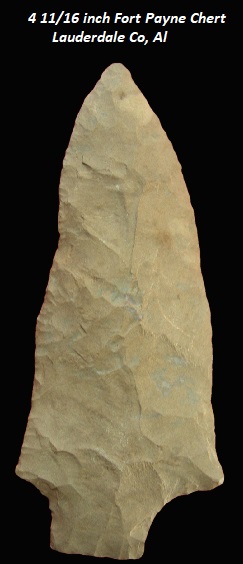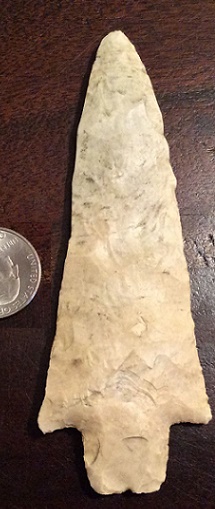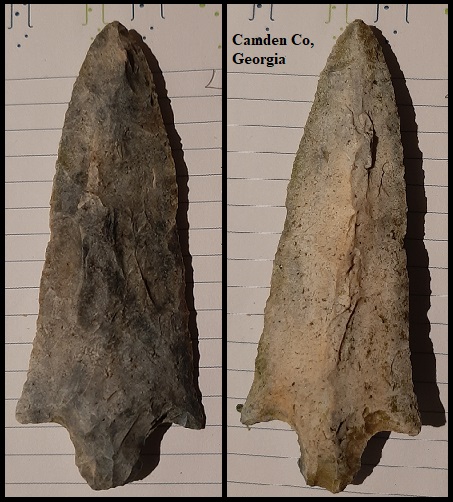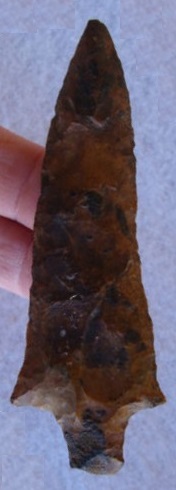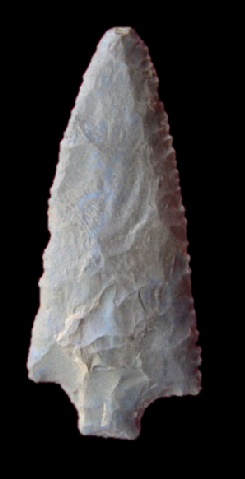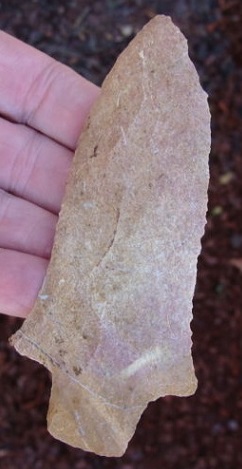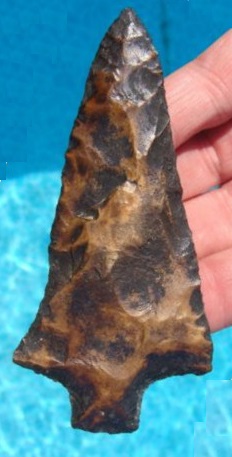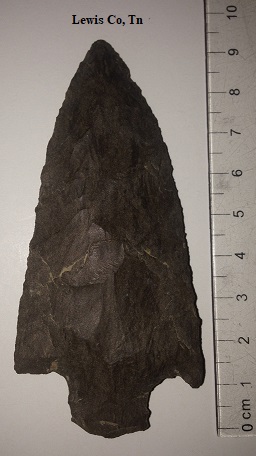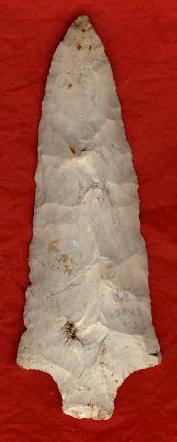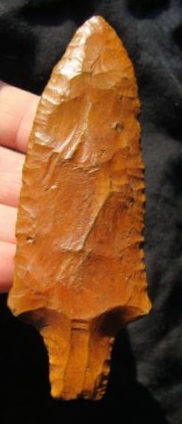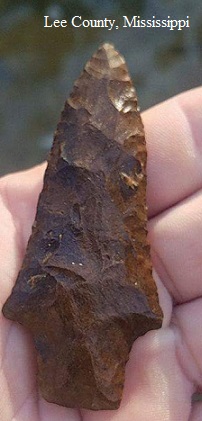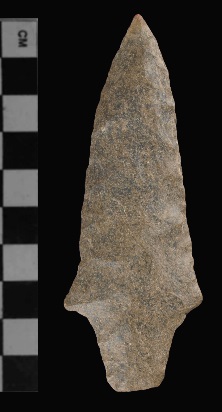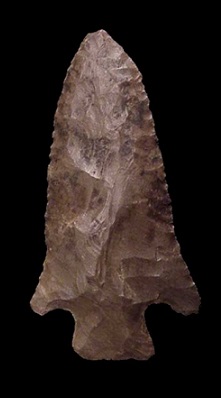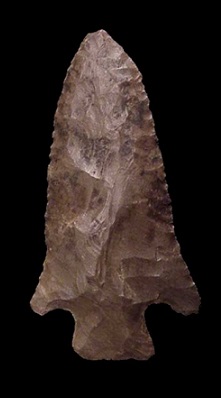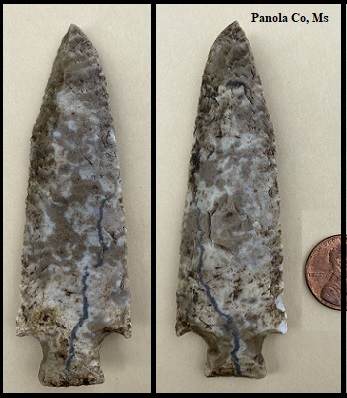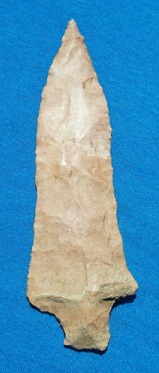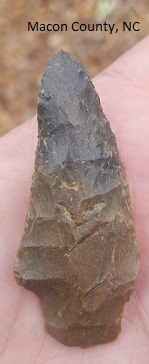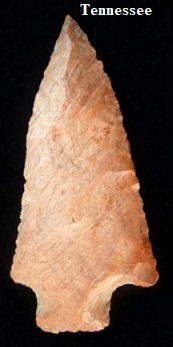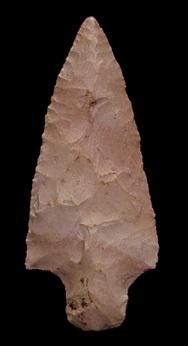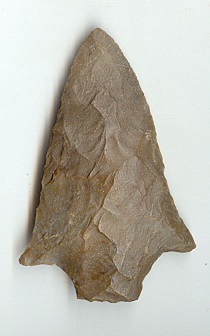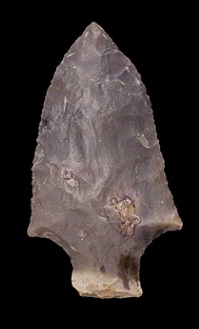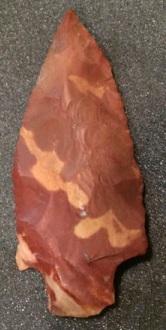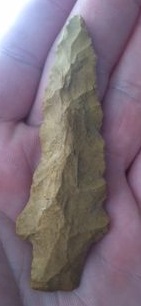Outline is Representative of Size and Shape:
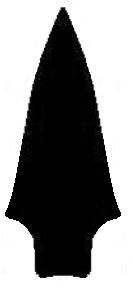
Name Details:
Identified By: David DeJarnette, Edward Kurjack, and James Cambron
Named For: Pickwick Basin, Tennessee River Valley (Type Site Location)
Date Identified: 1962
Type Site: Stanfield-Worley Bluff Shelter, Alabama
Identified By: David DeJarnette, Edward Kurjack, and James Cambron
Named For: Pickwick Basin, Tennessee River Valley (Type Site Location)
Date Identified: 1962
Type Site: Stanfield-Worley Bluff Shelter, Alabama
Point Validity:
Valid type
Dejarnette what the first anthropologist hired by the University of Alabama and was an expert on southeastern archaeology. Kurjack studied Alabama archaeology as a graduate student at the University of Alabama and went on to become an expert on Mayan anthropology. Cambron is a distinguished avocational archaeologist that did extensive work in Alabama and the Tennessee River valley. This point was named in a personally published book. This point has been referred to in numerous professional publications and is considered a valid type.
Pickwick Stemmed
Cluster: Ledbetter Stemmed Cluster Description of Physical Characteristics and Flaking Pattern:
This is a medium to large (2.75 to 4 inches) triangular stemmed point. The cross section may range from elliptical to having a median ridge on one or both faced. The blade may vary from an excurvate shape to an inward recurvate. The blade is commonly asymmetrical. Many examples have secondary pressure flaking forming serrations or beveling. The shoulder vary from horizontal to having an upward angle and are commonly asymmetrical. Some examples have had barbed shoulders. The stem ranges from straight to slightly contracting. The base is most commonly straight, but some examples may have a slight convex shape. The cortex may remain on the base. This point has a random flaking pattern.
Size Measurements:
Total Length - 58 to 117 mm (average 74 to 85 mm), Stem Length - 9 to 19 mm (average 10 to 15 mm), Blade Width - 35 to 60 mm (average 38 to 48 mm), Stem Width at shoulders - 15 to 24 mm (average 17 to 22 mm), Basal Width - 12 to 21 mm (average 14 to 18 mm), Thickness - 9 to 12 mm
Total Length - 58 to 117 mm (average 74 to 85 mm), Stem Length - 9 to 19 mm (average 10 to 15 mm), Blade Width - 35 to 60 mm (average 38 to 48 mm), Stem Width at shoulders - 15 to 24 mm (average 17 to 22 mm), Basal Width - 12 to 21 mm (average 14 to 18 mm), Thickness - 9 to 12 mm
Commonly Utilized Material:
Additional Comments:
This point appears in the Middle Archaic, but it seem to reach it's peak from 3,500 to 3,000 BP (W2).
This point appears in the Middle Archaic, but it seem to reach it's peak from 3,500 to 3,000 BP (W2).
Distribution: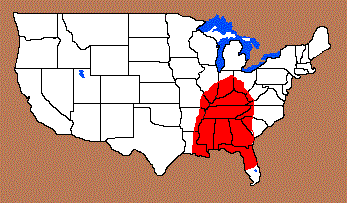
Distribution Comments:
This point is primarily found in the Tennessee River valley and into the Gulf Coast. This point has been found with less frequency into southern Illinois, southern Indiana, southern Ohio and the Tennessee River watersheds of North Carolina.
This point is primarily found in the Tennessee River valley and into the Gulf Coast. This point has been found with less frequency into southern Illinois, southern Indiana, southern Ohio and the Tennessee River watersheds of North Carolina.
Age / Periods:
Date: 6,000 - 3,500 B.P.
Cultural Period: Middle to Late Archaic
Glacial Period: Middle Holocene to Neoglacial
Culture:
Phase:
Date: 6,000 - 3,500 B.P.
Cultural Period: Middle to Late Archaic
Glacial Period: Middle Holocene to Neoglacial
Culture:
Phase:
Age Details:
Whatley (2002) notes that this type occur just prior to the appearance of the Savannah River points. Baker's (1995) estimate of 5,500 to 5,000 B.P. and could be a little earlier based on Webb's (1998). placement of Ledbetter/ Pickwick points from site 9DW77 in Dawson County, Georgia in the 4,020 to 4,990 B.P. range
Whatley (2002) notes that this type occur just prior to the appearance of the Savannah River points. Baker's (1995) estimate of 5,500 to 5,000 B.P. and could be a little earlier based on Webb's (1998). placement of Ledbetter/ Pickwick points from site 9DW77 in Dawson County, Georgia in the 4,020 to 4,990 B.P. range
Similar Points:
Appalachian, Ashtabula, Cotaco Wright, Cottonbridge, Etley, Little Bear Creek, Maples, Mulberry Creek, Savannah River, Shoals Creek
Appalachian, Ashtabula, Cotaco Wright, Cottonbridge, Etley, Little Bear Creek, Maples, Mulberry Creek, Savannah River, Shoals Creek

